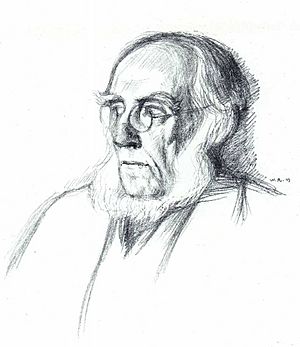Handbook of the New Zealand Flora facts for kids
| Author | Joseph Dalton Hooker |
|---|---|
| Subject | Botany |
| Genre | Florae |
| Publisher | L. Reeve & Co. |
|
Publication date
|
1864, 1867 |
The Handbook of the New Zealand Flora (often shortened to Handb. N. Zeal. Fl.) is a very important book about the plants of New Zealand. It was written by a famous English scientist named Joseph Dalton Hooker. This book describes and organizes all the different types of plants found in New Zealand.
Contents
What is the Handbook of the New Zealand Flora?
This book is like a big encyclopedia for New Zealand's plants. It helps scientists and plant lovers identify and learn about each plant. The book is made up of two main parts, or volumes.
The first part of the book was published in 1864. It focuses on all the different kinds of flowering plants in New Zealand. These are plants that produce flowers, like daisies or roses.
The second part came out a few years later, in 1867. This volume covers other types of plant life. It includes liverworts, mosses, lichens, fungi, and algae. These are often smaller plants or plant-like organisms.
Who was Joseph Dalton Hooker?
Sir Joseph Dalton Hooker was a very important botanist. A botanist is a scientist who studies plants. He was born in England in 1817.
Hooker traveled all over the world to study plants. He explored places like the Himalayas and Antarctica. His work helped us understand how plants are related to each other.
He became the director of the Royal Botanic Gardens, Kew, in London. This is a very famous garden and research center for plants. His "Handbook of the New Zealand Flora" is one of his many important books.
Why is this book important?
The Handbook of the New Zealand Flora was one of the first complete guides to New Zealand's plants. It helped scientists understand the unique plant life of the islands. Many plants in New Zealand are found nowhere else in the world.
This book helped set up a system for naming and classifying plants. This system is called systematic botany. It makes it easier for scientists everywhere to talk about plants. The book is still used today as a key reference for New Zealand's plant history.
See also
 In Spanish: Handbook of the New Zealand Flora para niños
In Spanish: Handbook of the New Zealand Flora para niños


